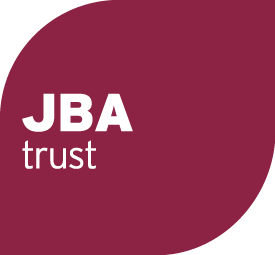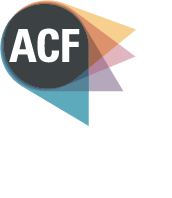British Chronology of Flash Floods
Database and interactive map of flash flood events in Britain derived from historical reports dating back over more than 200 years.
The chronology aims to support improved assessments of flash flood risk for a given location and of catchment vulnerability to flash flooding.
Flash floods arising from intense rainfall are rare events at a particular location and there may be few if any recent records. A search of a chronology of more than 200 years provides a better basis for assessing the probability of occurrence (Archer et al., 2017) than the limited observations currently available, especially for surface water floods.
Flash floods as defined here have a rapid or sudden onset for which Archer and Fowler (2018) proposed a ‘threat response time’ as the time from the initial perception of a flood (by a victim) to the occurrence of a level posing a threat to life and property. The hazard of rapid onset differs from the threat of extreme flood level or discharge, but the greatest danger arises from the combination of both rapid response and extreme flow.
Interactive map of the Flash Flood Chronology
The map displays a point for each significant place name in the chronology to make it easier to search for flash floods by location, for example catchment or town. Each point can be expanded to display details about the event, as described in the database.
How do I use the map?
Move the map by clicking and dragging anywhere on the map. Zoom in or out of the map by scrolling. Display event details by clicking on any point. Select dates of events you would like to display on the map by using the slider tool at the base of the map.
To help identify flash floods reported in multiple locations (but classed as part of the same event), every event has been randomly assigned a colour.
How was the map created?
The text-based format of the chronology was converted into a more structured and machine-readable dataset, which involved geocoding the place names found in the chronology.
The geocoding process utilised AI techniques including Natural Language Processing (NLP) to extract place names and then link them with geographical coordinates. This process is very efficient, but not perfect, and some points on the map could be in the wrong place, especially for common place names. However, the event descriptions and dates are still the same as in the original chronology text.
We are happy to receive feedback or corrections via this online feedback form and intend to update the map in future to incorporate improvements.
The full technical method for how the map was created is described here.
The chronology does not, by design, capture all flood events. Some notable floods, especially winter floods, will not be found in the chronology. Please see below for further details about the development of the chronology.
Database of the Flash Flood Chronology
About the database
Each region file is presented in a three-column table.
- The first column gives the date of the event with the source(s) of the information (including newspaper dates).
- The second column gives associated meteorological information, drawn mainly from British Rainfall (1861 to 1961) and Climatological Observers Link (1970 to 2019) but occasionally from other sources. Short period rainfall amounts are especially noted. Daily rainfall totals are also listed, particularly in the early chronology where these might have included short bursts of high intensity.
- The third column contains descriptive information, notably locations which have been flooded and the depth and extent of flooding. Collated information includes flood deaths, destroyed buildings and bridges, flooded area, depths in named buildings, roads flooded and flood pathways in settlements and rural erosion. The impact and potential impact of hail on flooding is also included.
How do I search the database?
A guide to the colour coding used in the database is available here.
Sources and methodology
The main source of information for the extended chronology is the online British Newspaper Archive (BNA) with records commencing from early 18th century. David Archer searched the record year-by-year, for the months April to October, from the beginning of the archive in 1700 using the words ‘flood’ and ‘thunder’ as a means of identifying potential flash flood occurrence. The months April to October were chosen to capture the season most associated with intense storms. The BNA record becomes sparse after 1960 and alternative sources were sought to cover the period to the present.
For the early chronology, the gap was filled by David Archer’s visits to libraries and Local Record Offices in the selected regions to collect data from hardcopy recent regional and local newspapers. It was not considered practical to access such information for the extended chronology due to the much greater area to be covered. Some additional information was found in individual national newspaper online archives including The Times, The Guardian, Daily Mail and Daily Mirror. Descriptive accounts of floods (as well as short period rainfall) in British Rainfall to 1968 and the Climatological Observer Link (COL) from 1970 were the most widely used sources. Other published books and papers were used but the flood information for this recent period is still incomplete (compared with the period before 1960).
Origins of the chronology
This chronology was initiated as part of the “SINATRA” (Susceptibility of catchments to INTense RAinfall and flooding) project, which was funded by the UK NERC Flooding from Intense Rainfall programme (the ‘early chronology’).
Regional chronologies were initially prepared for northern England and southwest England, divided into eight regions, as shown here on the map and described in Archer et al. (2019). The interest shown by users provided the stimulus to extend the chronology to the rest of England, Scotland and Wales as a private project by David Archer, in part supported by SINATRA. This extended chronology is divided between a further eight regions shown in the map. The total number of events for all regions is nearly 8000.
Potential uses of the chronology
It is hoped that the historical context provided by the chronology will help to support the management of flash flood risks with greater confidence. Some of the potential uses of the chronology are:
In assessments of surface water flood risk the data may be useful for Local Authorities or their consultants with respect to locations for which there is little previous archived information. Section 19 of the Flood and Water Management Act 2010 places some statutory requirements on local authorities to publish investigations of flood events including those from surface water and smaller watercourses. Whilst numerous Section 19 reports have been published online, they rarely provide historical information.
Flood risk on rivers from rapid rate of rise: The serious risk to life and property from rapidly rising river levels is of interest to risk management authorities. Despite this, there are few references to the assessments of risks of very fast-rising water levels in national flood strategy documents. By highlighting nearly 300 events of this type on rivers the chronology provides a basis for further investigation of vulnerable catchments and consideration of methods of forecasting and warning. The sudden nature of many surface water floods is also problematic, as is recognised in Defra’s 2018 Surface Water Management Action Plan.
Research on trends and variability Whilst there are some limitations with respect to recent data, the chronology has the potential for assessing trends and variability and to determine links between flash flood occurrence and broad scale weather or climatic patterns.
Events where large hail or deep accumulations of hail have occurred, especially with accompanying reports of flooding, are included in the chronology as a supplement to the TORRO hailstorms index.
Members of the public may simply want to know what extreme events have happened in their towns and village.

